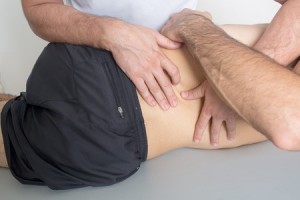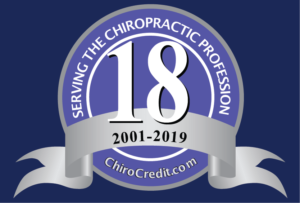 Most low back pain in older adults can be managed non-surgically. Randomized controlled clinical trials have shown that chiropractic manipulative treatment (CMT) is an effective, conservative treatment option for LBP. With this in mind, the authors of a new analysis wanted to explore whether older Medicare fee-for service beneficiaries with an episode of LBP and multiple comorbidities who obtained CMT during their episode had lower costs than those who did not.
Most low back pain in older adults can be managed non-surgically. Randomized controlled clinical trials have shown that chiropractic manipulative treatment (CMT) is an effective, conservative treatment option for LBP. With this in mind, the authors of a new analysis wanted to explore whether older Medicare fee-for service beneficiaries with an episode of LBP and multiple comorbidities who obtained CMT during their episode had lower costs than those who did not.
This study was an observational, retrospective study that used Medicare fee-for-service data from 2006 to 2012 to identify older (aged 66 to 99) patients who had a discrete episode of cLBP. The study included 4 groups of patients who used: 1) only CMT; 2) conventional medical care followed by CMT; 3) CMT followed by conventional medical care; and 4) only conventional medical care.
For these 4 treatment groups, the authors used un-weighted and propensity-score weighted inflation- and price-adjusted Medicare Part A, B, and D reimbursements during the episode. Propensity scoring is a powerful tool to strengthen causal inferences drawn from observational studies. Propensity scoring helps in selecting similar patient groups for comparison. Medicare Part A covers hospital, skilled nursing facility, home health and hospice care expenditures. Medicare Part B covers doctors’ services and other outpatient expenditures; and Medicare Part D covers prescription medications. Particular attention was given to Part B reimbursements for chiropractic care, psychiatric care, physical therapy care, and spinal manipulation therapy (SMT) provided by doctors of osteopathy (DOs) as well as to Part D reimbursements for pain medications.
The study also looked at rate of spine surgery within 1 year of the end of the episode as well as compound rates of growth for price and inflation-adjusted Medicare expenditures. In addition, the study examined expenditures for psychiatric visits and pain medications.
Results:
- Medicare reimbursements during the cLBP treatment episode were lowest for patients who used CMT alone
- CMT only patients had higher rates of healthcare use for low back pain but lower rates of back surgery in the year following the treatment episode
- Costs were greatest for patients receiving medical care alone
- Patients who used only CMT had the lowest annual growth rates in almost all Medicare expenditure categories
- Patients who used only CMT had the lowest Part A and Part B expenditures per episode day, although there was no indication of lower psychiatric or pain medication expenditures associated with CMT
Key Points:
- Among older, multiply-comorbid Medicare beneficiaries with a chronic low back pain episode, chiropractic manipulative treatment was associated with lower overall episode costs and lower episode costs per day
- Use of CMT was associated with lower total Part A and Part D Medicare cost growth for multiply-comorbid patients with chronic low back pain episodes over the course of the study period
- The authors found overall Medicare cost-savings associated with use of chiropractic care
- There was no evidence of lower psychiatric or pain medication expenditures associated with CMT
Reference:
Weeks WB, Leininger B, Whedon JM, Lurie JD, Tosteson TD, Swenson R, O’Malley AJ, Goertz CM. The Association Between Use of Chiropractic Care and Costs of Care Among Older Medicare Patients With Chronic Low Back Pain and Multiple Comorbidities. J Manipulative Physiol Ther. 2016 Feb 19. pii: S0161-4754(16)00007-5.


